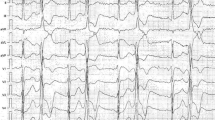Abstract
A 34-year-old man, who was previously fit and healthy, died suddenly on exercise. A post-mortem exam performed by forensic pathologists and a toxicological screening were normal; therefore, the cause of death was suspected to be sudden arrhythmic death syndrome, prompting the need for a molecular autopsy. Screening for genetic variations underlying arrhythmogenic genes by next-generation sequencing highlighted a heterozygous single-nucleotide variant in the exon n. 94 of the ryanodine receptor type 2 gene. This gene, encoding the cardiac ryanodine receptor, is one of the main genetic variants of catecholaminergic polymorphic ventricular tachycardia, estimated to affect 1 in 10,000 individuals. It manifests with syncope, seizures, or sudden death due to exercise- or emotional stress-induced bidirectional or polymorphic ventricular tachycardia, usually in children and young adults with morphologically normal hearts and normal baseline electrocardiograms. Even if this de novo missense mutation has not yet been associated with catecholaminergic polymorphic ventricular tachycardia, it is likely to be a disease-causing variant which leads to a defective protein responsible for disturbed ion flow.



Similar content being viewed by others
Abbreviations
- SADS:
-
Sudden arrhythmic death syndrome
- RyR2:
-
Ryanodine receptor type 2
- CPVT:
-
Catecholaminergic polymorphic ventricular tachycardia
- SR:
-
Sarcoplasmic reticulum
References
Basso C, Aguilera B, Banner J, Cohle S, d’Amati G, de Gouveia RH, di Gioia C, Fabre A, Gallagher PJ, Leone O, Lucena J, Mitrofanova L, Molina P, Parsons S, Rizzo S, Sheppard MN, Mier MPS, Kim Suvarna S, Thiene G, van der Wal A, Vink A, Michaud K (2017) Association for European Cardiovascular Pathology.Guidelines for autopsy investigation of sudden cardiac death: 2017 update from the Association for European Cardiovascular Pathology. Virchows Arch 471(6):691–705. https://doi.org/10.1007/s00428-017-2221-0
Kauferstein S, Kiehne N, Peigneur S, Tytgat J, Bratzke H (2013) Cardiac channelopathy causing sudden death as revealed by molecular autopsy. Int J Legal Med 127(1):145–151. https://doi.org/10.1007/s00414-012-0679-5
Larsen MK, Berge KE, Leren TP, Nissen PH, Hansen J, Kristensen IB, Banner J, Jensen HK (2013) Postmortem genetic testing of the ryanodine receptor 2 (RYR2) gene in a cohort of sudden unexplained death cases. Int J Legal Med 127(1):139–144. https://doi.org/10.1007/s00414-011-0658-2
Stattin EL, Westin IM, Cederquist K, Jonasson J, Jonsson BA, Mörner S, Norberg A, Krantz P, Wisten A (2016) Genetic screening in sudden cardiac death in the young can save future lives. Int J Legal Med 130(1):59–66. https://doi.org/10.1007/s00414-015-1237-8
Neubauer J, Lecca MR, Russo G, Bartsch C, Medeiros-Domingo A, Berger W, Haas C (2018) Exome analysis in 34 sudden unexplained death (SUD) victims mainly identified variants in channelopathy-associated genes. Int J Legal Med 132(4):1057–1065. https://doi.org/10.1007/s00414-018-1775-y
Sajantila A, Budowle B (2016) Postmortem medicolegal genetic diagnostics also require reporting guidance. Eur J Hum Genet 24(3):329–330. https://doi.org/10.1038/ejhg.2014.247
Fellmann F, van El CG, Charron P, Michaud K, Howard HC, Boers SN, Clarke AJ, Duguet AM, Forzano F, Kauferstein S, Kayserili H, Lucassen A, Mendes Á, Patch C, Radojkovic D, Rial-Sebbag E, Sheppard MN, Tassé AM, Temel SG, Sajantila A, Basso C, Wilde AAM, Cornel MC, on behalf of European Society of Human Genetics, European Council of Legal Medicine, European Society of Cardiology working group on myocardial and pericardial diseases, European Reference Network for rare, low prevalence and complex diseases of the heart (ERN GUARD-Heart), Association for European Cardiovascular Pathology (2019) European recommendations integrating genetic testing into multidisciplinary management of sudden cardiac death. Eur J Hum Genet. https://doi.org/10.1038/s41431-019-0445-y
Hershberger RE, Givertz MM, Ho CY, Judge DP, Kantor PF, McBride KL, Morales A, Taylor MRG, Vatta M, Ware SM, ACMG Professional Practice and Guidelines Committee (2018) Genetic evaluation of cardiomyopathy: a clinical practice resource of the American College of Medical Genetics and Genomics (ACMG). Genet Med 20(9):899–909. https://doi.org/10.1038/s41436-018-0039-z
George CH, Higgs GV, Lai FA (2003) Ryanodine receptor mutations associated with stress-induced ventricular tachycardia mediate increased calcium release in stimulated cardiomyocytes. Circ Res 93(6):531–540
Jiang D, Wang R, Xiao B, Kong H, Hunt DJ, Choi P, Zhang L, Chen SR (2005) Enhanced store overload-induced Ca2+ release and channel sensitivity to luminal Ca2+ activation are common defects of RyR2 mutations linked to ventricular tachycardia and sudden death. Circ Res 97(11):1173–1181
Tester DJ, Kopplin LJ, Creighton W, Burke AP, Ackerman MJ (2005) Pathogenesis of unexplained drowning: new insights from a molecular autopsy. Mayo Clin Proc 80(5):596–600
Choi G, Kopplin LJ, Tester DJ, Will ML, Haglund CM, Ackerman MJ (2004) Spectrum and frequency of cardiac channel defects in swimming-triggered arrhythmia syndromes. Circulation 110(15):2119–2124
Author information
Authors and Affiliations
Corresponding author
Ethics declarations
Conflict of interest
The authors declare that they have no conflict of interest.
Additional information
Publisher’s note
Springer Nature remains neutral with regard to jurisdictional claims in published maps and institutional affiliations.
Rights and permissions
About this article
Cite this article
Foti, F., De-Giorgio, F., Vetrugno, G. et al. A de novo ryanodine receptor 2 gene variant in a case of sudden cardiac death. Int J Legal Med 134, 619–623 (2020). https://doi.org/10.1007/s00414-019-02160-8
Received:
Accepted:
Published:
Issue Date:
DOI: https://doi.org/10.1007/s00414-019-02160-8




